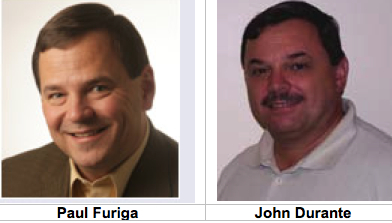I’m delighted to bring you my first double Q&A and the longest one I’ve run — with Paul Furiga and John Durante of WordWrite Communications. This Q&A will appear over the next eight days.
Bio: Read Paul’s bio here and John’s bio here.
Q&A with Paul Furiga and John Durante, Questions 1 and 2:
Q: If you could identify an organization that desperately needs to tell a better story what would it be?
A: First the legacy carriers of the domestic U.S. airline business (not Southwest), who constantly strike us as desperately needing a clue, and perhaps even remedial training in how to communicate with stakeholders in all corners. As shifting economic and social conditions have strained that industry, too many carriers have gone out of their way to publicly convey panic (It’s one thing to make a boneheaded move to charge extra for checked baggage, but now you’re going publicize it?) This industry seems to have completely lost its sense of what is potentially valuable to the market and too often communicates in ways that suggest it really doesn’t care what its audience thinks. The American auto industry is another example. The big companies are experimenting with social media, for example, but it’s hard to be authentic and to promote your fluent storytellers when, for example, the CEO of GM is sacked by the government. Now what do you do with his blog, which was supposed to tell the GM story and reconnect with the audience? The story of the auto industry CEOs traveling to Washington early on in the auto crisis is an easily remembered and inauthentic story. It’s clear that the auto companies and their many internal and external communicators either didn’t understand the danger of a story involving flying on private jet to beg for taxpayer money, or they didn’t understand the power of a story at all.
Q: How did you initially become involved with story/storytelling/narrative? What attracted you to this field?
A: John and I initially came at this from what would appear to be conventional avenues. I had been a journalist for two decades before going into public relations; John had been a market researcher and marketing strategist for a variety of organizations. We both learned that the “story” is the cornerstone of influential and persuasive communication. Using stories to drive communications meaning has drawn us to a wide range of PR and marketing ideas.
